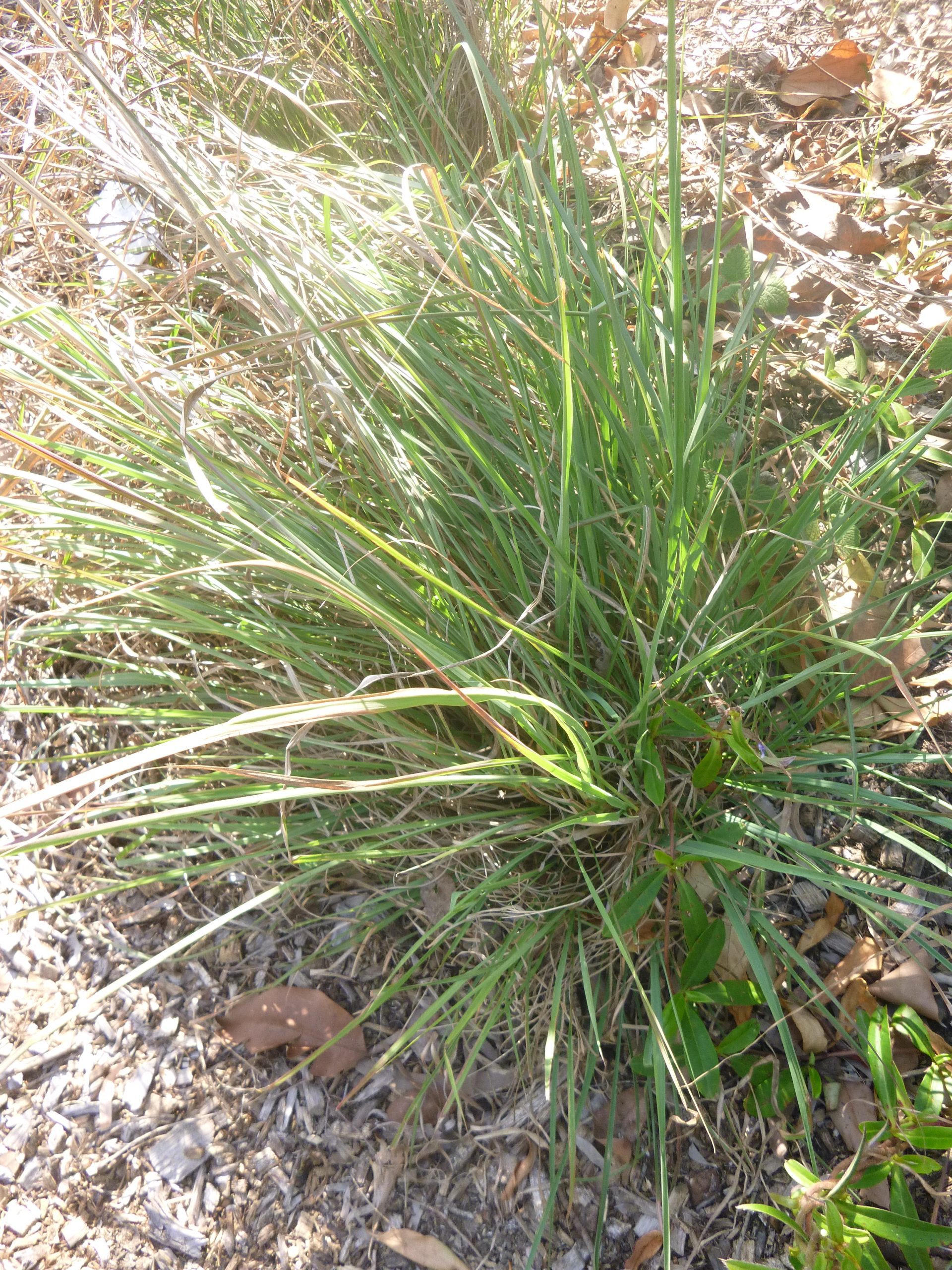Barbed wire grass
Cymbopogon refractus, Fam. Poaceae

Perennial tussock grass to 1.5m tall.
| Weed Category: | |
| Weed: | No |
| Form or habit: | Grass or grass-like plant |
| Family: | Poaceae |
| Leaf: | Linear, up to 40 x 0.4cm; dull to bluish due to a waxy substance or whitish surface bloom which may be wiped off. Ligule 2mm long, membranous. Crushed leaves have a spicy or gingery scent. |
| Flower conspicuous: | Conspicuous |
| Flower colour: |
Blue, Red, Brown, Green |
| Flower description: | Narrow panicle of one to several erect branches, each branch terminates in a pair of racemes that are partially enclosed by a boat-shaped bract; racemes become reflexed giving the appearance of barbed wire. Changes in colour from green or blue green to rusty brown. Any time of the year. |
| Fruit conspicuous: | Conspicuous |
| Fruit colour: |
Brown, Blue, Green, Red |
| Fruit: | |
| Fruit description: | Two to six pairs of spikelets per raceme; paired spikelets dissimilar, the lower sessile and the upper pedicellate. Mostly awnless. |
| Habitat: | Open forest, woodland |
| Distribution | Queensland, New South Wales, Northern Territory, Victoria, Melanesia, Pacific Islands. |
| Food source for: | Seed eaten by the pale-headed rosella. |
| Toxicity: | No toxicity known |
| Origin: | Australia, Melanesia, Pacific Islands. |
| Notes: | Dominates some grasslands on headlands. It is a robust tussock grass forming fountain-like clumps whose base and leaves have an aromatic, somewhat gingery, fragrance. The chopped up leaves may be added to a pot of tea. |
| Information sources: | Melzer R. & Plumb J. (2007) Plants of Capricornia. |



